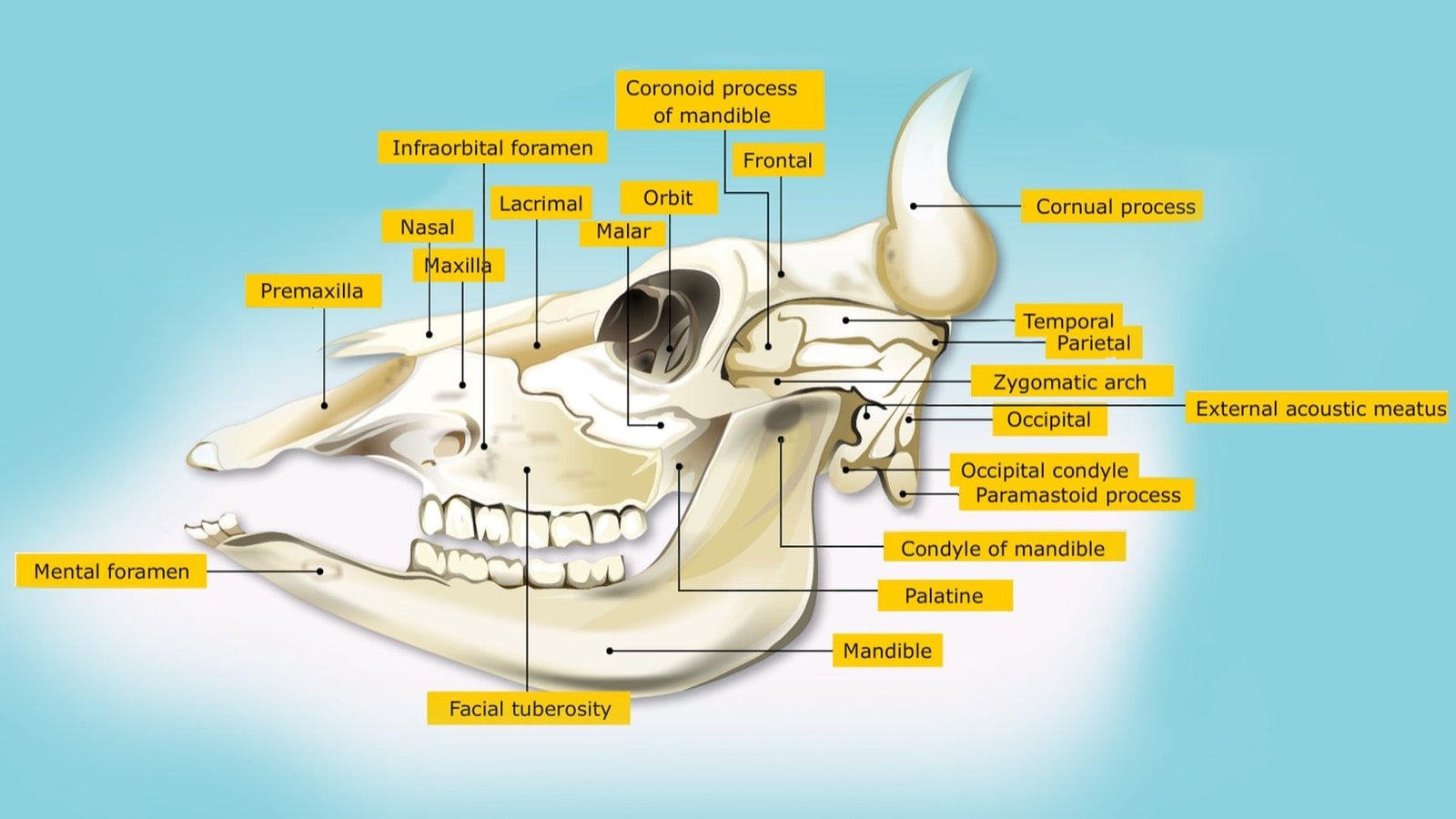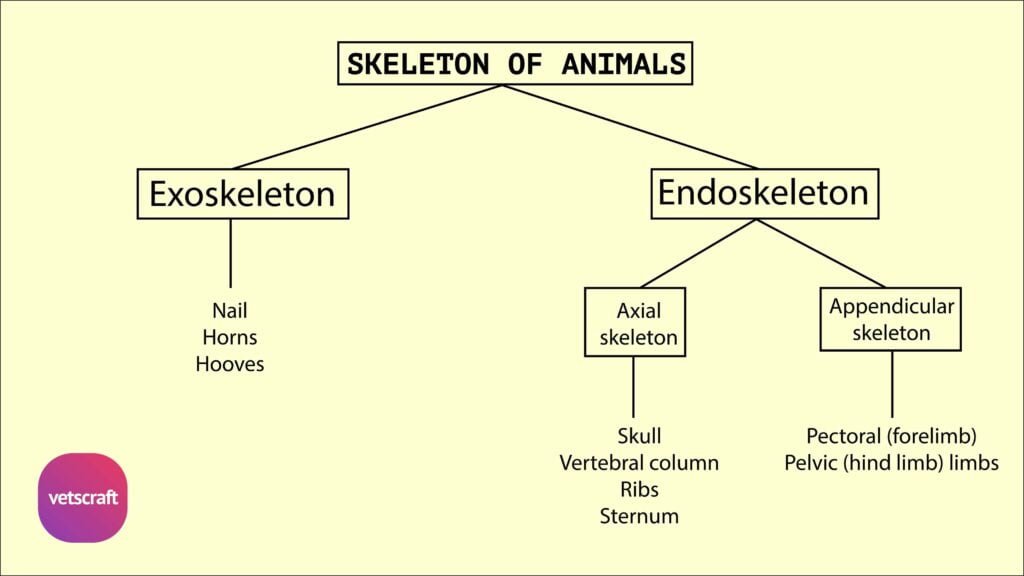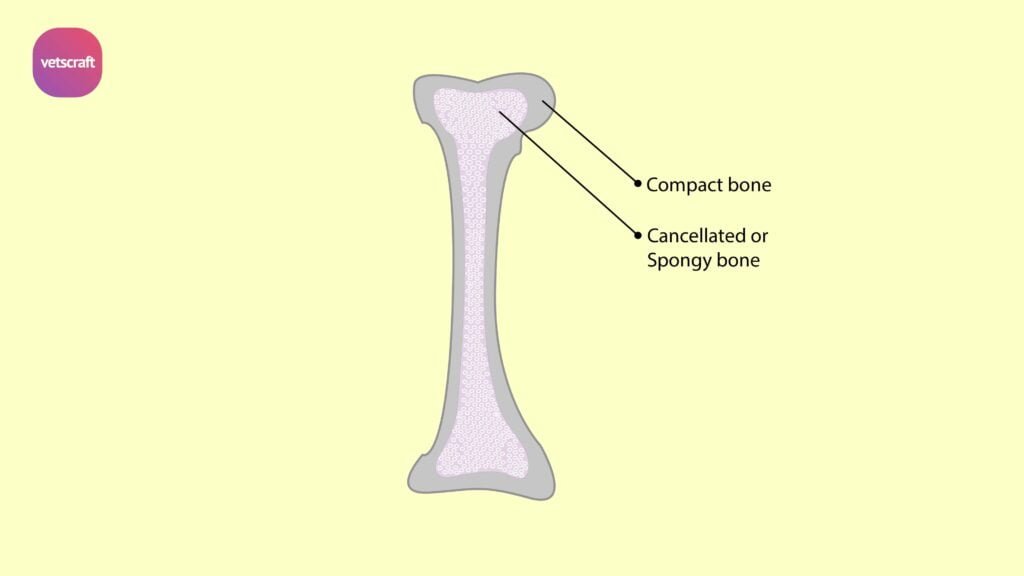Skull Bones of Domestic Animals
The bones of the skull are divided into cranial and facial groups. The cranial bones form the cranium, which houses the brain and essential organs of hearing, while the facial bones form the boundaries of the oral and nasal cavities and also support the pharynx, larynx, and tongue.
The two sets together form the orbits. Some of the bones also form sinuses, which are called paranasal sinuses.

The cranial bones are the parietal, interparietal, occipital, sphenoid, ethmoid, temporal, and frontal. Of these, the occipital, sphenoid, and ethmoid are unpaired.
The facial bones are the nasal, premaxilla, maxilla, palatine, pterygoid, lacrimal, malar, turbinates, vomer, mandible, and hyoid.
Most of the bones of the skull are flat bones developed in membrane. Those of the cranial base may be classified as irregular and are developed in cartilage.
The occipital, sphenoid, ethmoid, petro-mastoid parts of the temporal, and turbinates develop in cartilage. The others develop in membrane.
Wormian or sutural bones are small, irregular bones situated in the sutures of the cranial bones. They develop after birth in the cranial, craniofacial, and facial sutures. Their number and position vary with the species of animals and even among breeds of the same species.
Cranial wormian bones are rare. When present, they are found at the junction of the petrous-temporal and occipital bones. Wormian bones of the craniofacial and facial sutures are more frequent. They are particularly seen in bovine species in the frontonasal, internasal, lacrimonoasal, zygomaticomaxillary, orbital, and maxillonasal-incisive sutures.
The skull of the pig and the skull of the rabbit are described separately for convenience.

